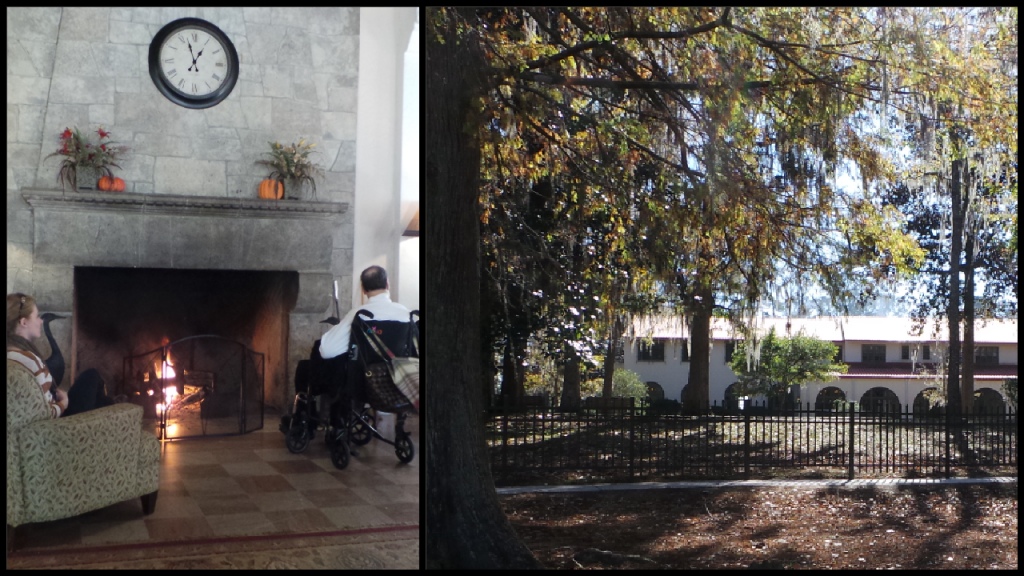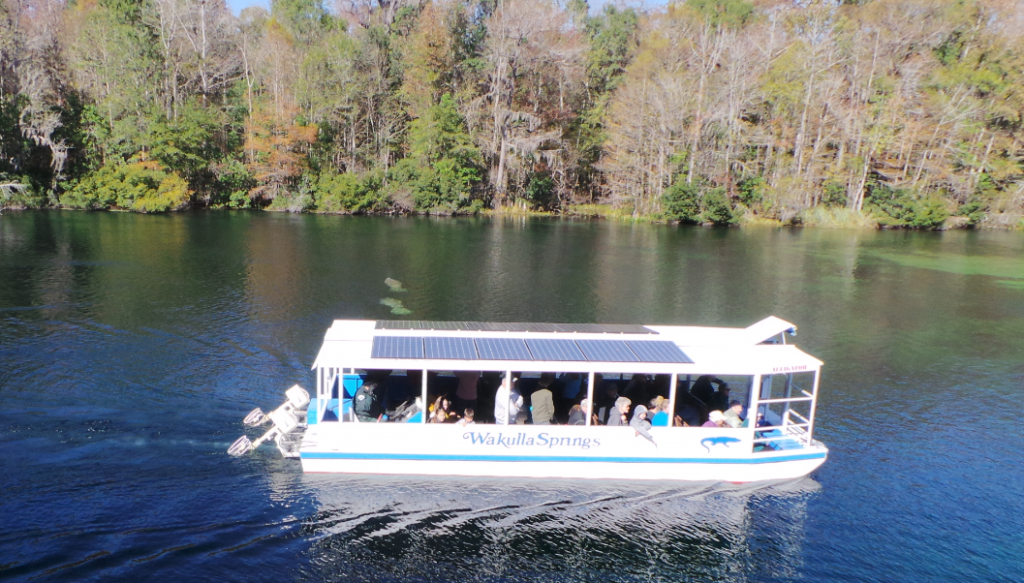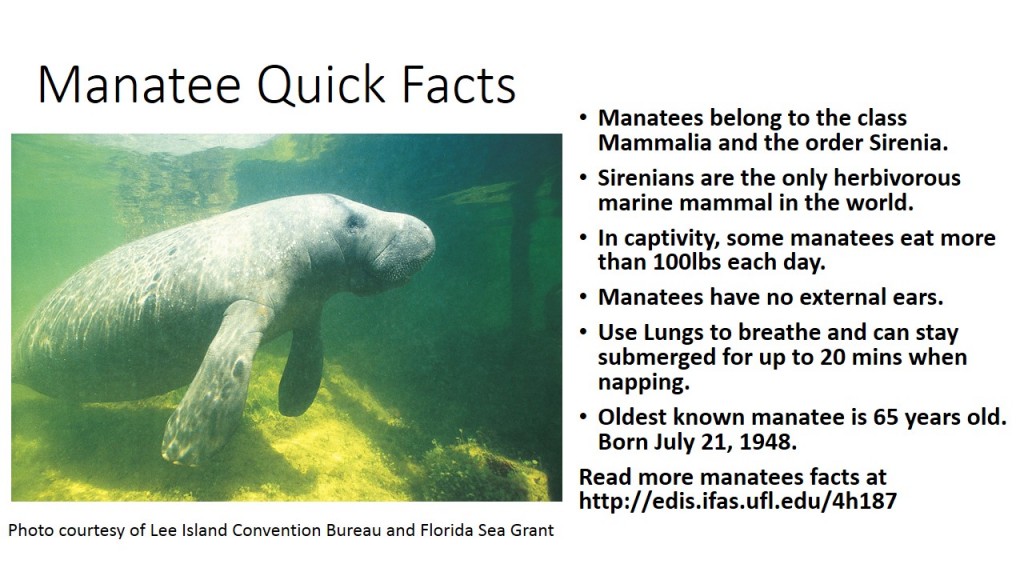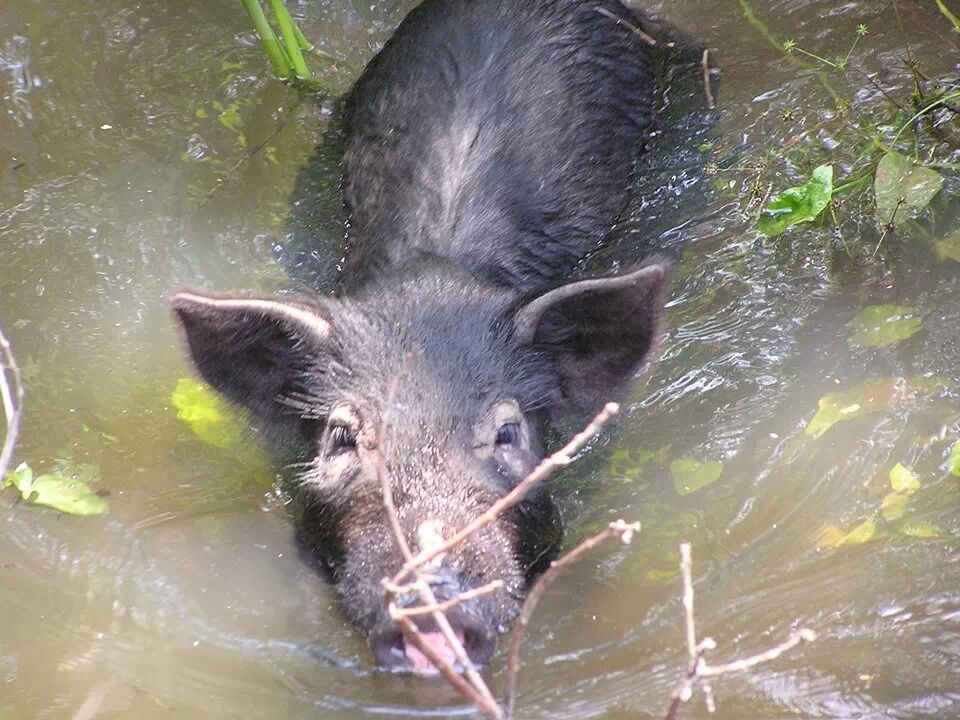
Invasive Species of the Day (February 25): Coral Ardisia and Wild Hogs
Coral Ardisia (Ardisia crenata):
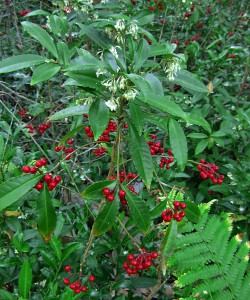
Attractive red berries entice homeowners to use as a landscape plant but coral ardisia can quickly dominate adjacent natural areas. photo courtesy of Les Harrison
Coral ardisia is also known as coral berry, spice berry, and scratchthroat. It was introduced into Florida in the early 1900’s for ornamental purposes.
In the ensuing years, it has since it escaped cultivation and has become established in hardwood hammocks and other moist woods of natural areas and grazing lands. Populations can currently found in Florida, Louisiana and Georgia.
This evergreen sub-shrub reaches a height of 1.5 to 6 feet and tends to grow in multi-stemmed clumps. Leaves are alternate, 8 inches long, dark green above, waxy, without hairs, and have scalloped margins and calluses in the margin notches. Flowers are typically pink to white in stalked axillary clusters, usually drooping below the foliage. The fruit is a bright red, globose, single-seeded berry, measuring approximately 0.25 inches in diameter. White-berried populations are also known to exist.
Coral ardisia is classified a Category I weed on the Florida Exotic Pest Plant Council Invasive Plant List. Control of coral ardisia may be accomplished by two methods. A low-volume foliar application of Garlon 4 or Remedy provides suppression of this plant. Complete foliar coverage is essential to success and re-treatment will be necessary for complete control. Basal bark applications with Garlon 4 or Remedy in an oil carrier can also be utilized for suppressing this invasive weed. Do not apply more than 8 quarts of Remedy or Garlon 4 per acre and treat no more than ten percent of the total grazed area if applying greater than two quarts per acre.
More information is available at http://edis.ifas.ufl.edu/ag281.
For local assistance, contact your county UF IFAS Extension office.
For more information contact Les Harrison, UF/IFAS Extension Wakulla County – Agriculture & Natural Resources Extension Agent by phone at 850-926-3931.
Will Sheftall Natural Resources Agent with UF/IFAS Extension Leon County exams the impacts of invasive coral ardisia on local urban forests in Northwest Florida.
Wild Hogs(Sus scrofa):
Wild Hogs, also called Feral Hogs, are not native to the U.S. Wild hogs are highly adaptable and can find suitable habitat easily. Wild hogs can be all shapes, sizes and colors since they are hybrids of many different breeds. Wild hogs sometimes resemble their domestic relatives but sometimes resemble their Eurasian backgrounds.
Wild hogs are probably the most prolific large mammals in the world. They reach sexual maturity at a young age. Females have multiple litters of 3-8 piglets per year. Natural mortality rates are low. Wild hog females and young live and travel in groups called sounders. Sounders typically have 1 to 3 adults and several young. When females reach maturity, they either stay with the sounder or they go out and form a new sounder with other young females. Young males leave the sounder alone at about 16 months.
Wild hogs are opportunistic omnivores that feed by rooting and grazing. This rooting behavior is why we consider them to be a pest. The impact of wild hogs on the environment is soil erosion, decreased water quality, spread of other invasive plants, damage to agricultural crops, and damage to native plants and animals. They have been documented as threats to threatened and endangered species. They can significantly impact populations of reptiles, amphibians, small mammals, ground nesting birds and even deer.
Wild hogs pose a health risk to humans because they can carry numerous diseases and parasites. Care should be taken when handling wild hogs. Wear gloves, cover any open wounds, and wear clothing that can be cleaned thoroughly.
Human hunting is the most significant cause of mortality in wild hogs, although hunting alone will not control hog populations in a good habitat. The most effective way to remove wild hogs from a location is a combination of trapping and shooting.
In Florida, wild hogs may be hunted year round on private land (with permission of the landowner) and at night with no permit required. Hogs may be trapped year round. Wild hogs cannot be trapped and released onto public land. Trapped wild hogs can only be transported with a permit from FDACS) to slaughter or to an approved Feral Swine Holding Facility. For more information on Wild Hogs, go to: http://edis.ifas.ufl.edu/uw322 and http://www.myfwc.com/hunting/by-species/wild-hog/ .

![NISAW-logo09[1]](https://nwdistrict.ifas.ufl.edu/nat/files/2014/02/NISAW-logo091-300x119.jpg)

